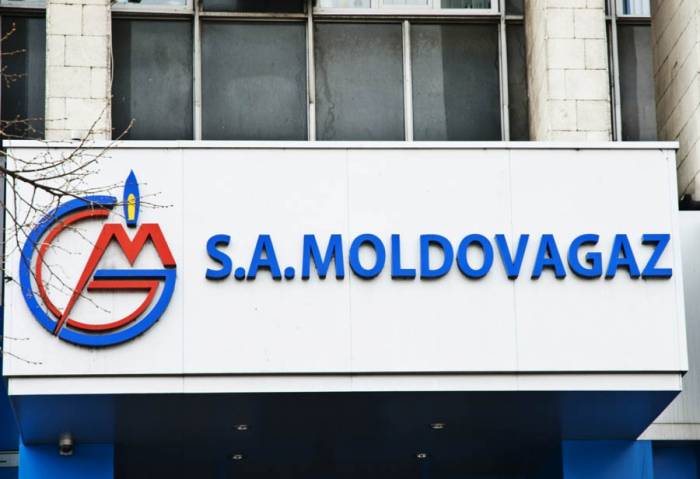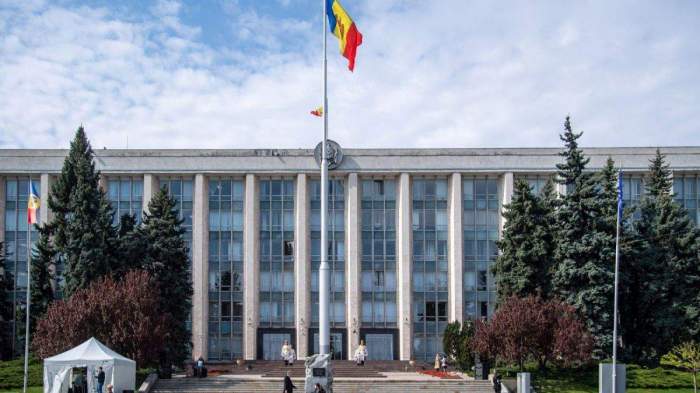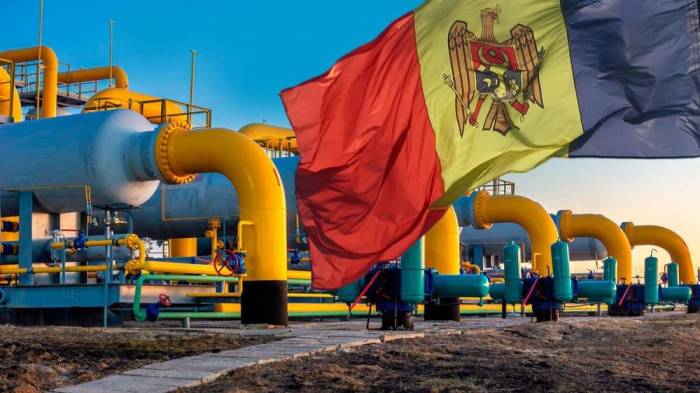By Samir Muradov
News.Az presents an interview with Ruslan Shevchenko, a political analyst from Moldova and Doctor of Historical Sciences.

– What are the main reasons for the cessation of Russian gas transit through Ukraine, and how does this impact Moldova and its Transnistrian region?
– There are two main reasons. The first is the expiration, as of January 1, 2025, of the contract between Ukraine’s Naftogaz and Gazprom, signed in December 2019 for a five-year term. The second is geopolitical. A few months after Russia’s invasion of Ukraine, in the spring of 2022, Ukrainian authorities announced that they did not intend to extend the transit agreement signed in late 2019, given the new circumstances.
Initially, the plan was to halt transit starting January 1, 2024, but Ukrainian leadership decided to wait for the contract to expire officially. This decision was partly influenced by recommendations from European structures, as the EU needed time to prepare for the cessation of Ukrainian transit. By the end of 2024, the process was completed, and EU representatives announced they were fully ready for the halt, having secured alternative suppliers (such as the U.S., Norway, and Algeria) and established new gas supply routes. Thus, Brussels consented to Ukraine discontinuing the transit of Russian gas, which had previously amounted to 40–45 billion cubic meters annually. Effective 7 a.m. on January 1, 2025, the transit of Russian gas through Ukraine was completely terminated.
Before January 1, 2025, Moldova relied on two primary gas supply routes: one pipeline running through Pervomaiske–Shirokoye (both in Ukraine) to Kuchurgan (Moldova) and onward to southern Romania, and the Trans-Balkan corridor through Bulgaria and Romania to Moldova’s borders. Additionally, a secondary pipeline runs through northern Moldova near Bălți into western Ukraine, alongside the Iași-Ungheni-Chișinău pipeline. With the closure of both pipelines through Ukraine, Moldova is now dependent on gas supplies from Romania via Iași and the Trans-Balkan corridor. Both Bulgaria and Romania have guaranteed unhindered gas passage for Moldova, with volumes contracted until April 1, 2025. However, this supply, amounting to approximately 1.2 billion cubic meters annually, is insufficient for Transnistria, which requires an additional 2 billion cubic meters to sustain industrial enterprises, particularly MoldGRES and the Moldovan Steel Plant in Rîbnița.
Currently, there is no resolution to this issue. Since Moldovagaz is the only official entity authorized to procure gas from foreign suppliers, Moldovan authorities proposed supplying gas to the separatist regime in Transnistria under the condition of full payment. However, this presents two critical challenges for the separatists. Firstly, gas prices in Transnistria are about 15 times lower than those in the rest of Moldova, and this disparity is set to widen further after January 1, 2025, due to rising gas prices in Moldova. Paying for 2 billion cubic meters at international market rates (currently over $500 per 1,000 cubic meters) would bankrupt Transnistria’s budget and devastate its economy, as the region lacks sufficient funds. One alternative involves debt settlement through the sale of industrial output to Moldovan authorities, but this would still collapse the separatist economy. Secondly, such an economic catastrophe would inevitably trigger a political crisis, forcing the Transnistrian region to submit to Moldova’s legitimate authorities—a devastating blow to Russian interests in the Balkans and Putin’s global reputation. As a result, the separatists have so far rejected Moldova’s proposal.
They have a limited window—20 days (until January 20) before their gas reserves are depleted and 50 days (until February 20) before coal reserves at MoldGRES are exhausted. By February 20, absent a compromise ensuring the region’s access to gas and electricity, Transnistria will face a humanitarian crisis, marked by the complete cessation of industrial operations, transport, and supply chains for food and consumer goods. This would lead to the shutdown of stores, restaurants, and service facilities, eventually causing an economic collapse and the breakdown of local governance structures.
Simultaneously, the region will experience a large-scale population exodus. Fleeing to Ukraine is unlikely due to the ongoing war and anticipated hostility towards Transnistrians. Instead, they would likely move to the right-bank region of Moldova or further west. Some would remain in Moldova, creating substantial challenges for local authorities and social services, requiring significant financial assistance from the EU akin to the support provided during Ukraine’s 2022 crisis. Others would migrate to Romania and other European nations.
Illegal military structures, including the Transnistrian armed forces, intelligence services, and militia, along with Russian “peacekeepers” tasked with preserving Russia’s military presence, would become unsustainable once their food and fuel supplies run out. At that point, they would face a stark choice: surrender to Moldovan authorities and facilitate the restoration of central control over the eastern regions, or face starvation and inevitable collapse.

Photo: Radio Moldova
– What consequences are Transnistrian residents already experiencing due to the lack of heating and hot water?
– Heating in the region has been cut off, with exceptions made only for hospitals, some catering establishments, and multi-apartment buildings (strictly for cooking purposes). Even in these buildings, heating is gradually disappearing, especially where central heating systems are shared with private homes. Hot water supply has been discontinued. “Tiraspoltransgaz” has shut off gas to boiler houses, private residences, and apartments with gas boilers.
Cinemas continue to operate but are heated using air conditioners. The drama theater is still functioning but is unheated. Residents have been advised to stockpile firewood, with specific locations designated for its sale. Thirty heating points have been set up for 1,300 people, despite separatist claims that the region’s population is 465,000; independent estimates place it between 250,000 and 350,000.
After the winter holidays, the Transnistrian State University, local schools, and other educational institutions will transition to remote learning, with exams also conducted online. Residents are advised not to drain water from radiators or use gas and electric stoves for heating. Methane refueling stations are reserved exclusively for emergency vehicles (ambulances, repair services, etc.).
Prices for certain types of bread have begun to rise. However, local authorities have assured the population that electricity prices will not increase. Meanwhile, according to the regional “Ministry of Economic Development,” all industrial enterprises, except for those producing food, have ceased operations. If the gas supply issue is not resolved soon, these facilities may never restart. As the economy of the left-bank region relies heavily on these industries, this could lead to economic disaster and the gradual disintegration of governance structures.
– How does the cessation of gas transit through Ukraine affect Moldova’s energy security, given its dependence on Russian supplies?
– With the loss of a consistent gas supplier, Moldova’s energy vulnerability has significantly increased. Domestic gas prices are now tied to the cost of gas supplied via the Trans-Balkan pipeline and its market price on European exchanges, which can fluctuate greatly depending on the season (e.g., in the summer of 2023, it was just over $200 per 1,000 cubic meters, while it is currently $526).
This will result in significant tariff increases for utilities and other services, as well as substantial price hikes for all goods and products in Moldova, many of which are already at or above European levels (despite Moldovan salaries being far below the European average). The sole “advantage” is that gas from the Trans-Balkan pipeline and exchanges will remain available under any circumstances, eliminating the risk of a sudden supply cutoff.

Photo: Getty Images
– What steps is the Moldovan government taking to prevent an energy crisis and reduce dependence on imported gas?
– For Moldova, an energy crisis not only threatens gas supplies but also poses the risk of rolling blackouts, as electricity previously supplied to right-bank Moldova by the MoldGRES power plant (controlled by separatists and unlawfully appropriated by Russia) is generated using natural gas. Since MoldGRES refuses to sign a contract to process incoming gas, citing potential supply instability, the government faces a dual challenge: ensuring a stable supply of both gas and electricity.
While gas will be sourced either from the market or via the Trans-Balkan pipeline, electricity poses a greater challenge. About 25% of Moldova’s electricity needs are met by local facilities, including the Costești-Stânca hydroelectric plant, Chișinău’s TEC-1 and TEC-2 thermal plants, and the Northern Power Network. Around 40% of the supply will come from the state-owned enterprise Energocom, purchasing from Romania’s OPCOM exchange. Ukrainian “Energoatom” has committed to providing nighttime electricity, while an additional 10–15% will be derived from renewable energy sources, such as wind farms.
Despite this diversification, the risk of widespread power outages and significant price hikes remains high. Such developments could trigger further inflation in Moldova, undermining the pro-European Party of Action and Solidarity (PAS) and President Maia Sandu’s government, which has struggled to distance itself from this crisis.
– What are the prospects for resolving the gas issue with Russia and Ukraine, given the ongoing war and the situation in Transnistria?
– Prospects for resolution are slim. The declared goal of the U.S. and EU is to eliminate Eastern Europe’s dependency on Russian gas, reducing Kremlin revenues and facilitating an end to the war in Ukraine. Ukrainian authorities, on their part, have stipulated that any resumption of gas transit, even in limited volumes, would require gas to change ownership at the Russia-Ukraine border. In Moldova’s case, this would mean gas purchased directly by Moldova.
To date, this option has never been officially considered or proposed by Moldovan authorities. Other Ukraine-related alternatives have also been dismissed to avoid straining relations with the neighboring country, which is already under significant pressure. This has created a “gas stalemate,” leaving Moldova reliant on the previously outlined supply routes.
The duration of this situation remains uncertain. During this period, Moldova will continue to face the constant threat of a severe energy crisis. Moldovan citizens can only hope for a resolution to emerge soon.
